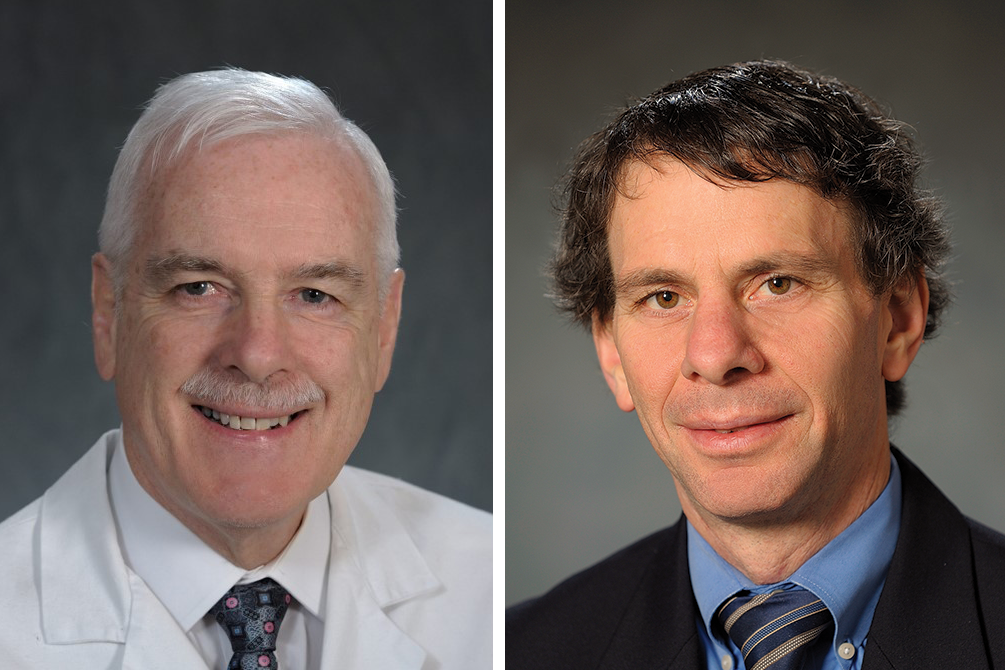
ECOG-ACRIN Creates Task Force on Advancement for Women
July 7, 2021
From the Co-Chairs, June/July 2021
July 7, 2021Mi Guía (My Guide) App for Hispanic/Latina Patients with Breast Cancer

 Could a culturally-sensitive app help improve endocrine therapy medication adherence in Hispanic/Latina patients undergoing breast cancer treatment? Betina R. Yanez, PhD (Northwestern University) is exploring this question in a pilot trial funded by the ECOG-ACRIN Cancer Research Group (ECOG-ACRIN). In the interview below, she discusses the project and how it has the potential to improve cancer care and quality of life for these patients.
Could a culturally-sensitive app help improve endocrine therapy medication adherence in Hispanic/Latina patients undergoing breast cancer treatment? Betina R. Yanez, PhD (Northwestern University) is exploring this question in a pilot trial funded by the ECOG-ACRIN Cancer Research Group (ECOG-ACRIN). In the interview below, she discusses the project and how it has the potential to improve cancer care and quality of life for these patients.
What is Mi Guía (My Guide) and what does it aim to do?
The Mi Guía pilot project that ECOG-ACRIN is currently funding builds on years of work. Mi Guía began in 2015 and the concept was to create a smartphone-based application that provides culturally and linguistically tailored information about supportive oncology services and psychosocial education for Latina and Hispanic breast cancer survivors. There is a dearth of accessible, evidence-based cancer information for this population. Over the years, we worked with partners and stakeholders in the community to ensure we accommodated cultural considerations and the needs of these patients with breast cancer. We developed Mi Guía, piloted it, and collected feedback. We published studies and adapted the app in several ways—and now we are testing one of those adaptations in a pilot study supported by ECOG-ACRIN.
The version of the app in the ECOG-ACRIN study includes features designed to improve adherence to hormone treatments like tamoxifen and aromatase inhibitors. Non-adherence is a public health problem among breast cancer survivors in general, including Hispanic/Latina survivors, and can predict poor outcomes. The app allows users to set personalized medication reminders and track when they have taken their medication. It also provides updates about how well they are adhering to their medication schedule. Additionally, we received feedback during an earlier iteration that users would value tools and strategies for managing side effects related to hormonal therapy. These side effects, like fatigue, mood changes, and muscle and joint pain, are associated with non-adherence. By adding information in Spanish, in a digestible format, about how to manage side effects and talk with providers about them, we hope to also enhance medication adherence.
What are the outcome measures for this study?
This is a pilot trial, so we are looking at things like feasibility, user engagement, and retention. Other preliminary outcome measures are health-related quality of life and hormone therapy adherence. We are collecting data at two sites, Northwestern University Feinberg School of Medicine and Montefiore Medical Center, and hope to enroll 60 participants.
What are some examples of how Mi Guía is culturally tailored to Hispanic/Latina survivors?
Related to side effects and medication adherence, many patients shared that they felt it was difficult to communicate with their doctor—to express concerns or say they are having issues. Sometimes the problem is language, so we include information about accessing translator services, but sometimes it is cultural: how different cultures view communication and authority figures. We try to address assertiveness, to normalize different communication styles, and emphasize the importance of being direct and open. While this might seem disrespectful for certain cultures, in other cultures it is common. We try to show how open communication can help patients get the most out of their breast cancer care and treatment.
We received a lot of feedback regarding family values and the importance of family social support for Hispanic/Latina patients, so we incorporated information about how family members can support women who are in treatment or having side effects. On the other hand, there are patients who are in the US by themselves, who may be working to send money to family in other countries. They may have feelings of isolation or loneliness, so we feature Spanish-speaking support groups. Additionally, Mi Guía has information about religious and spiritual support groups because we know that religion and spirituality can be very important for this group of patients.
We also include survivor stories of other Hispanic/Latina patients. We received feedback that patients find it helpful to hear the perspectives and experiences of others like them. Survivor stories help validate their feelings, normalize their experiences, and reduce the stigma of cancer and cancer-related side-effects.
How might Mi Guía evolve and transform patient care moving forward?
I would like to eventually see something like Mi Guía integrated within a healthcare system and more accessible to patients. Maybe it could be incorporated into the patient-facing portal that many health systems have, so physicians could endorse and recommend it to their patients. Before that happens, though, we need to see if it can actually improve medication adherence.
If the app is successful and helps with adherence as well as tracking of side effects, and gives feedback about symptoms patients may want to discuss with their doctor, it could be a really useful tool to improve patient–physician communication. The patient cannot be solely responsible for managing their symptoms and side effects. Apps like Mi Guía could help facilitate communication and physician involvement. I think the next step is to make the tool more bi-directional, so we are not just helping patients manage, but also helping patients and providers work together.
Dr. Yanez would like to acknowledge Della Makower, MD, site principal investigator at Montefiore Medical Center, who has been essential to this project.
![ECOG-ACRIN logo[19516]275×75](https://blog-ecog-acrin.org/wp-content/uploads/2021/03/ECOG-ACRIN-logo19516275x75.png)
